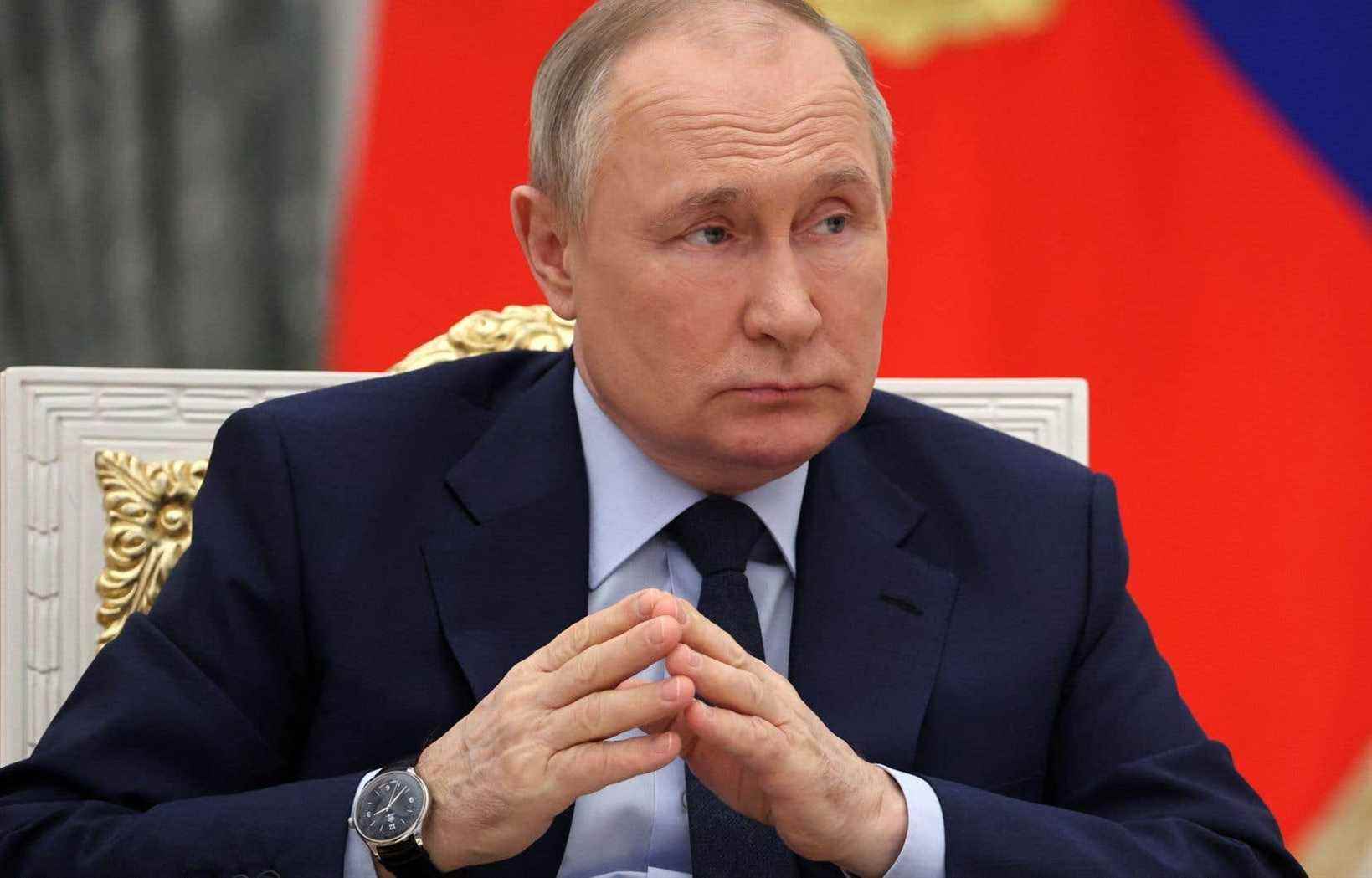Russian President Vladimir Putin on Thursday called the Russian army’s takeover of the strategic port of Mariupol in Ukraine a “success”, preferring to continue to besiege the last fighters there rather than give the final assault.
Ukrainian soldiers are holed up in the vast Azovstal steelworks of this port located at the southern tip of the Donbass, transformed into a martyr city by nearly two months of Russian shelling and siege. They refuse to surrender and the deputy commander of the Azov battalion, Sviatoslav Palamar, asks, via Telegram messaging, for security “guarantees” from the “civilized world” to get out.
Ukrainian President Volodymyr Zelensky says they have around 1,000 civilians, women and children “and” hundreds of wounded with them.
In this context, “I consider the proposed assault on the industrial zone to be inappropriate. I order it to be canceled,” Putin said during a meeting with his defense minister, Sergei Shoigu, broadcast on Russian television.
” We must think […] to the life and health of our soldiers and our officers, we must not enter these catacombs, and crawl underground”, affirmed the master of the Kremlin.
“Block off this whole area so that not a fly comes through,” he added. After several ultimatums from the Russian army, he too called on the fighters to surrender, promising them that they would “save their lives” and be “treated with dignity”.
Resumption of evacuations
According to Mr. Choigou, there would remain 2000 fighters in the steelworks. He did not mention civilians.
Local authorities fear that more than 20,000 people have died in Mariupol, due to the fighting but also the lack of food, water and electricity. The Russian army has controlled much of the city for days already, having even taken Western journalists there.
While the evacuations of civilians were, throughout the siege, rare and perilous to organize, the First Deputy Prime Minister of Ukraine Iryna Vereshchuk indicated Thursday that four buses of civilians had been able to leave the city.
They drive towards Zaporijjia, a journey of some 200 km which can sometimes take several days because of the many checkpoints to cross in this region of south-eastern Ukraine where fighting continues. Other bus departures were expected during the day.
Shots all over the front line
In the rest of Donbass and the south of the country, the Ukrainian authorities indicated Thursday morning that the Russian forces “continue their artillery fire on the entire front line”.
With in particular intense fighting in the region of Izium, “incessant bombardments” in Popasna and Roubizhné, in the Lugansk region, and new strikes on Mykolaiv, in the south on the road to Odessa, which left one dead. and two wounded, according to its governor Vitaly Kim.
“The situation is getting more complicated hour by hour,” Lugansk Governor Sergei Gaïdaï wrote on Telegram on Wednesday, renewing his calls for civilians to evacuate. “Get yourself safe […]. Go! “, he had launched.
And in the kyiv region, in Borodyanka, one of the localities occupied by Russian forces in March, local authorities said on Thursday that they had unearthed nine new bodies of civilians killed by the Russians.
“These people were killed by the (Russian) occupiers and some of the victims show signs of torture,” Kyiv region police chief Andriy Nebytov said on Facebook.
Since the withdrawal of Russian forces at the end of March, “1,020 bodies of civilians, only civilians”, have been found by the Ukrainian authorities and transported to morgues for examinations, Ukrainian Deputy Prime Minister Olga Stefanichyna told AFP on Thursday. at AFP. kyiv denounces with the West “war crimes” perpetrated by the Russians, an accusation formally rejected by Russia.
A long war
If the ordeal of Mariupol seems to be coming to an end, the battle for control of the entire Donbass region and part of southern Ukraine promises to be long.
Especially since the capture of this port, by allowing the Russians to make a complete connection between their forces in the north of the Donbass and their forces from Crimea, could also release troops to strengthen their positions on the front line further to the north. And that the Ukrainians have obtained in recent days more substantial military aid both from the Americans and from several of their allies to resist them.
After long hesitation, Israel notably indicated on Wednesday that it agreed, for the first time, to send protective equipment (helmets and bulletproof vests) to the Ukrainian army, while Norway announced that it had supplied around 100 French-designed anti-aircraft missiles to Ukraine.
European Council President Charles Michel, visiting kyiv on Wednesday, also assured President Zelensky that the European Union would do “everything possible” for Ukraine to “win the war”. He also promised that she would make her EU membership a priority, and that new sanctions would soon target Russian oil and gas exports, as President Zelensky has been demanding for weeks.
On Thursday, two other European leaders, Spanish Prime Minister Pedro Sanchez and his Danish counterpart Mette Frederiksen, were in kyiv to meet the Ukrainian leader.
Turkish Foreign Minister Mevlut Cavusoglu, whose country is trying to mediate in the conflict, on Wednesday accused “countries within NATO” of wanting “the war to last” and “that Russia weakens”.
Some Western diplomats fear for their part that a long war will weaken the unity of the vast coalition which has adopted unprecedented sanctions against Russia.
If the war is concentrated in the Donbass region, far from kyiv and NATO borders, the sense of urgency and unity of the West may diminish in the long run, “it’s a challenge”, a diplomat told AFP.
